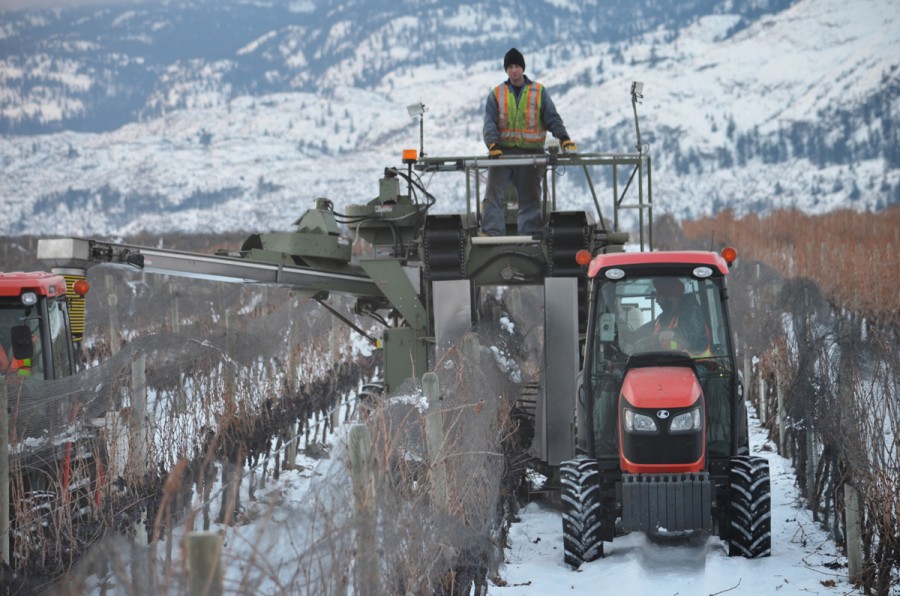Composite Polymer a Winner at Grape Harvesting Season

Harvesting grapes to make the next batch of your favorite wine requires a unique and finely-tuned piece of machinery. Mechanical grape harvesters may look cumbersome, yet they perform a delicate and time-critical task. One of the most important components of the grape harvester is the shaker system.
After working with wine growers Agri-tech Solutions International founder, Grant Sewell quickly learned how unreliable the shaker rod systems are and the huge economic impact (labor costs, production downtime, missed harvest deadlines) on growers when they break during harvest season. He believed he could develop a solution using composite polymer materials. He enlisted Pultron Composites, to collaborate and establish a shaker component that was not only reliable but harvested grapes similar to that of handpicking.
The grape harvest rods can experience breakage for any number of reasons. High ambient temperatures, difficult to harvest varietals, poor trellising of the vines (not machine friendly), or sub-standard materials/technical issues associated with their manufacture are often at fault. Delays through repair or replacement parts can chew up valuable time, these are crucial hours lost which result in loss of profits, additional unplanned R&M expense, extra labor costs, and missed delivery deadlines.
Importance of the shaker system
The shaker rod system on a grape harvester is the heart of the machine, removing the fruit from the vine. It operates at around 400-500+ rpm in a continuous horizontal motion so it is under constant flexural and fatigue strain.
The rod provides the stiffness, the whip movement, and the drive. The secret is getting the energy to flow off the fiberglass to the plastic for an even flow.
These components are usually factory-made from either molded plastic, fabricated from extruded plastic, or fiberglass (or a combination of both). These materials are prone to weakness, breakage, or splintering if manufactured from a sub-standard parent material.
The major grape harvester companies are based in France and have already committed to doing things a certain way. The use of a fully plastic molded harvesting rod that some companies use can be flawed. If any air is entrapped in the plastic mold there will be a weakness and this is where breakage occurs. To move to a high-performance fiberglass component would require R&D investment. At present, there is still a limited understanding of how composites can improve durability and performance.
The fine art of grape harvesting
When harvesting season approaches, the 'over-row' harvester is run along the vine rows, where a looped harvesting rod shakes the fruit off the vine and onto a conveyor belt. When this is being done, next season’s fruit is still establishing itself on the vine and needs to be left undisturbed with the maximum of foliage left intact.
Ultimately, the winemaker wants to achieve the closest thing to hand-harvesting. This means:
- no broken skin
- no oxygen exposure
- no juice left on the vines
- minimal matter other than grapes (MOG).
With the added time pressure of harvesting and unforeseen weather events, it is a stressful time of year for the grower, harvesting crew, and winery alike.
Composite Polymer Rod improves Harvester Performance
Working with customers on the ground and experiencing frustration with recurring breakages, our client, came up with a simple design to improve flexural strength and advance the overall performance of the shaker rod system. The design consisted of a high-performance composite polymer rod with a plastic cover secured by a crimp – it is a critical component for delivering durability.
“The rod provides the stiffness, the whip movement, and the drive. The secret is getting the energy to flow off the fiberglass to the plastic for an even flow,” says Agri-Tech Solutions founder, Grant Sewell.
After trialing and rigorous testing with Pultron Composites, a final resin change was made to increase flexural and fatigue properties. A huge improvement in performance was achieved and the new shaker component is still a commercial success 15 years on.
With the improved shaker system and the reliability of the composite rod, the shaker rate has been slowed while running the grape harvester at the same speed. The significant reduction in shaker system speed has resulted in better fruit harvesting, reduced MOG, and less machine wear.
Harvesters have noted, that when using the improved shaker system, the vines are left looking untouched, work is finished at a faster rate, and there are significantly fewer breakages.
Agri-Tech Solutions International founder, Grant Sewell supplies quality components to the agricultural and horticultural sectors in New Zealand, Australia, South Africa, Canada, and Israel.
All imagery supplied courtesy of Grant Sewell.
Main image: Mission Hill harvesting grapes for Icewine in Canada